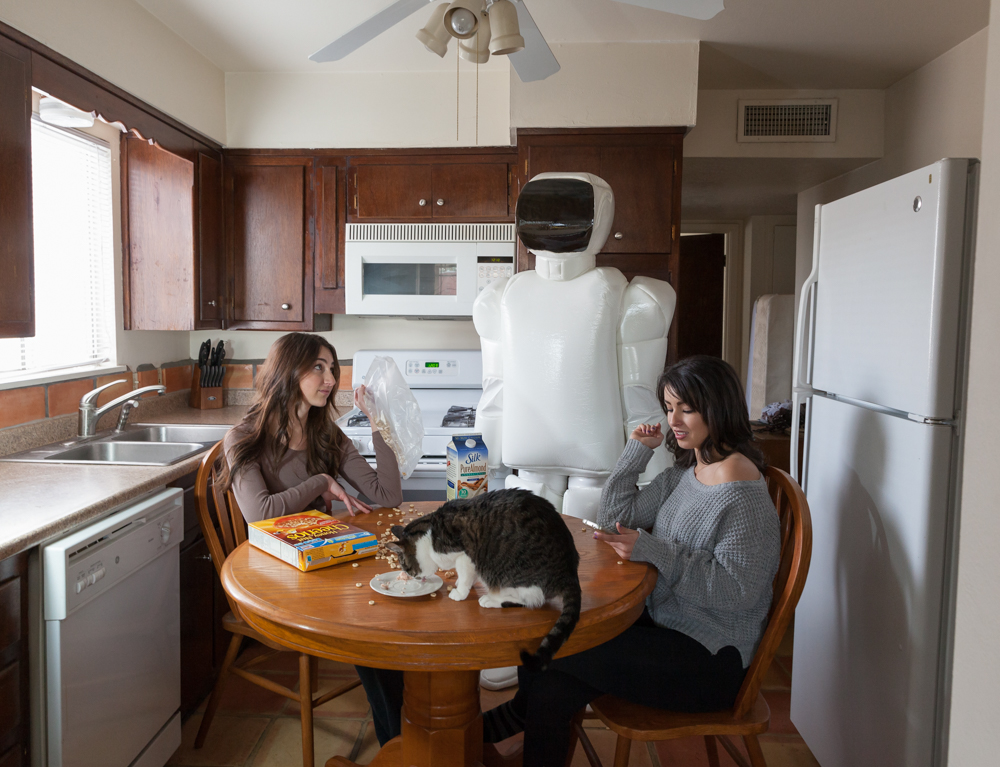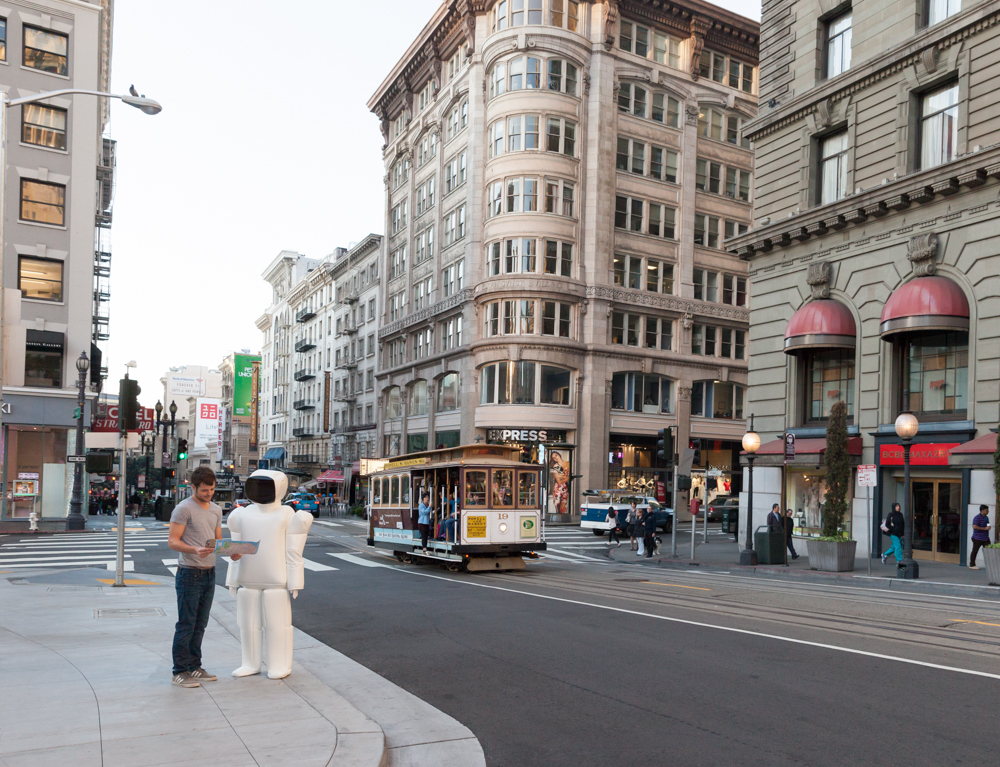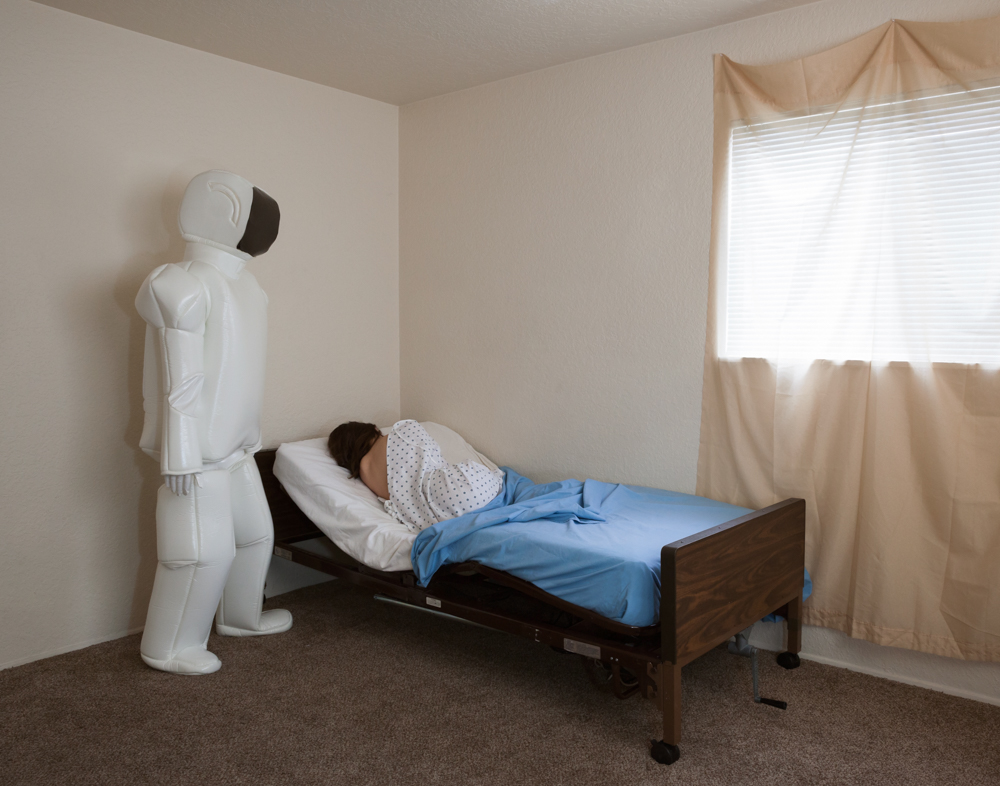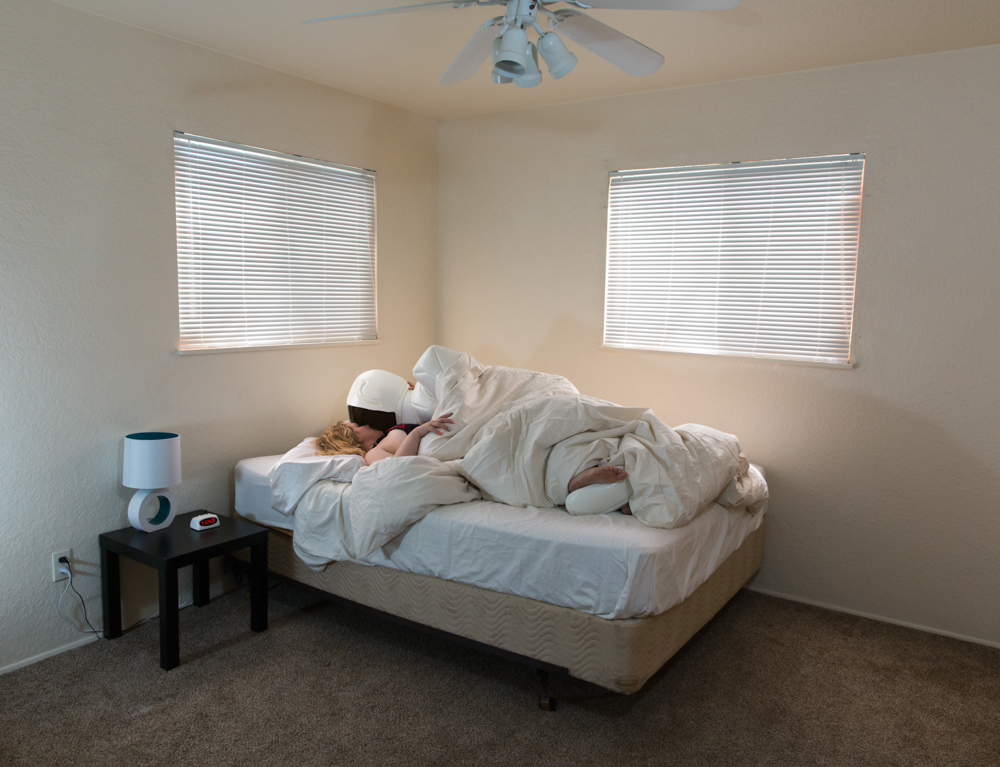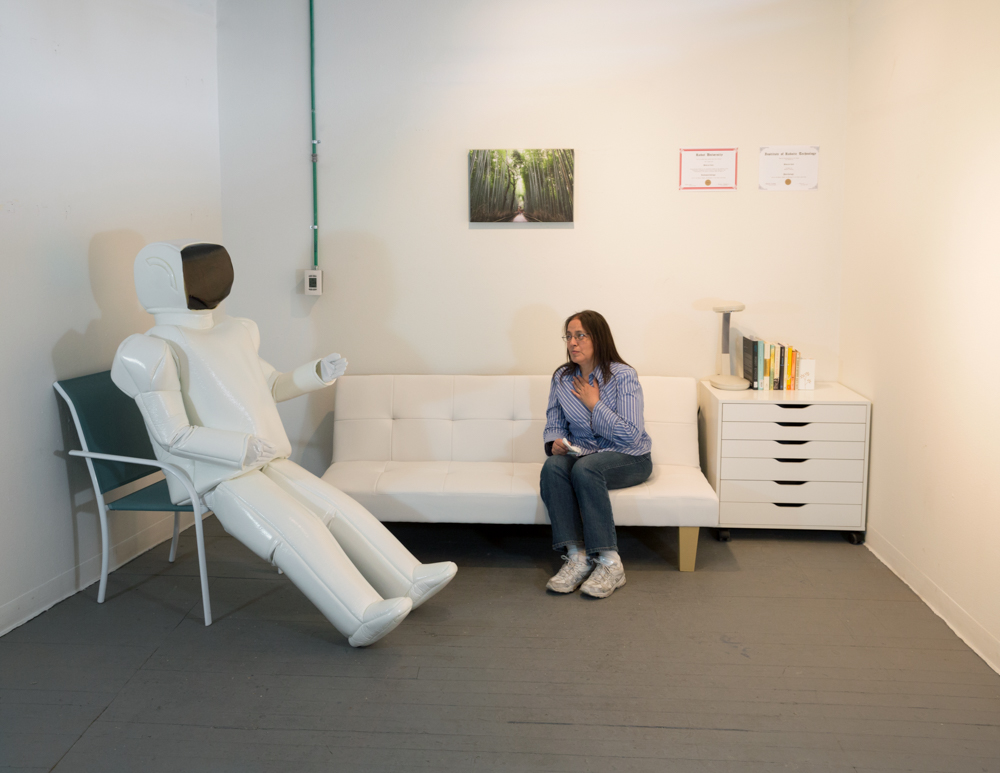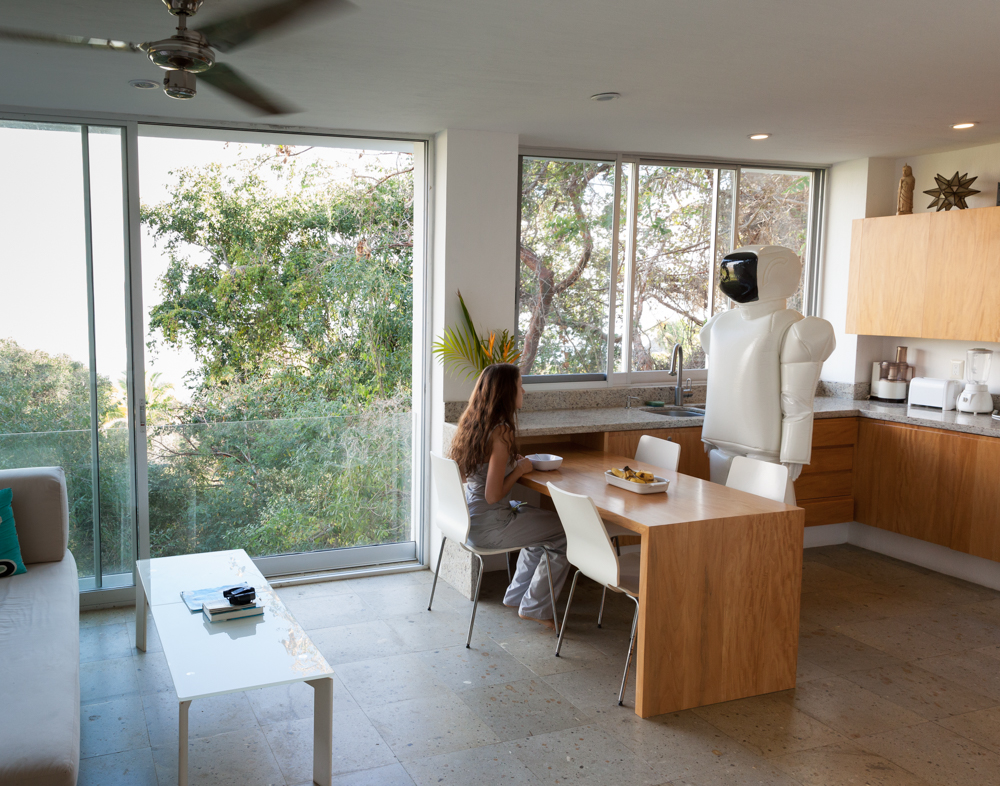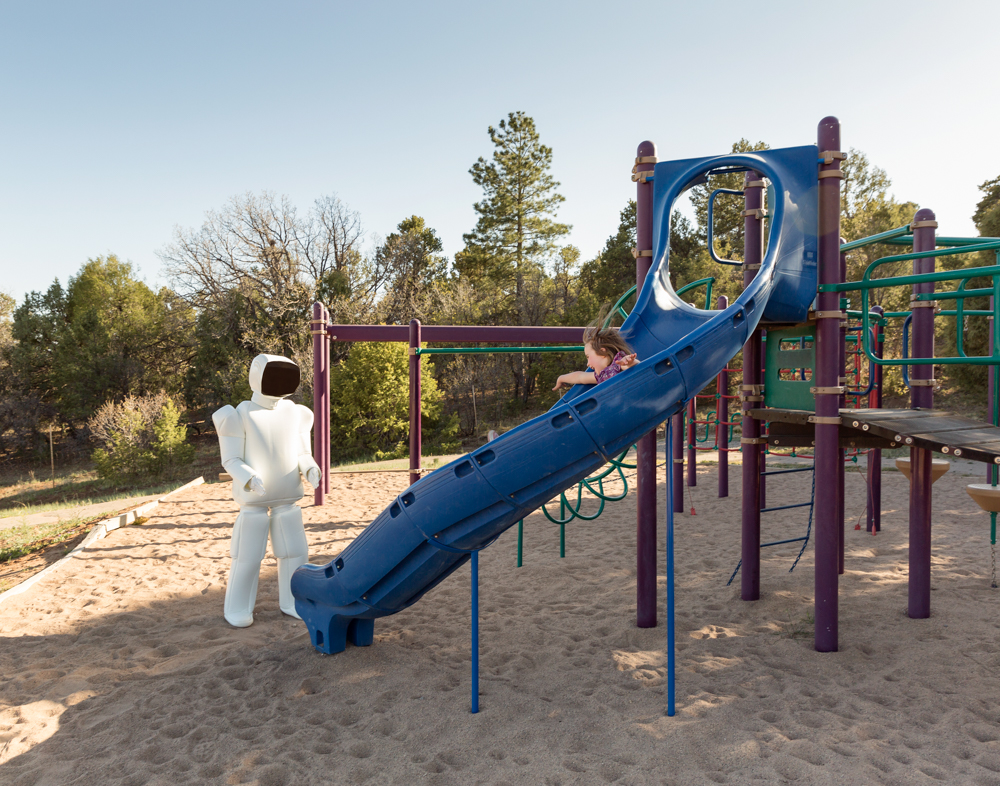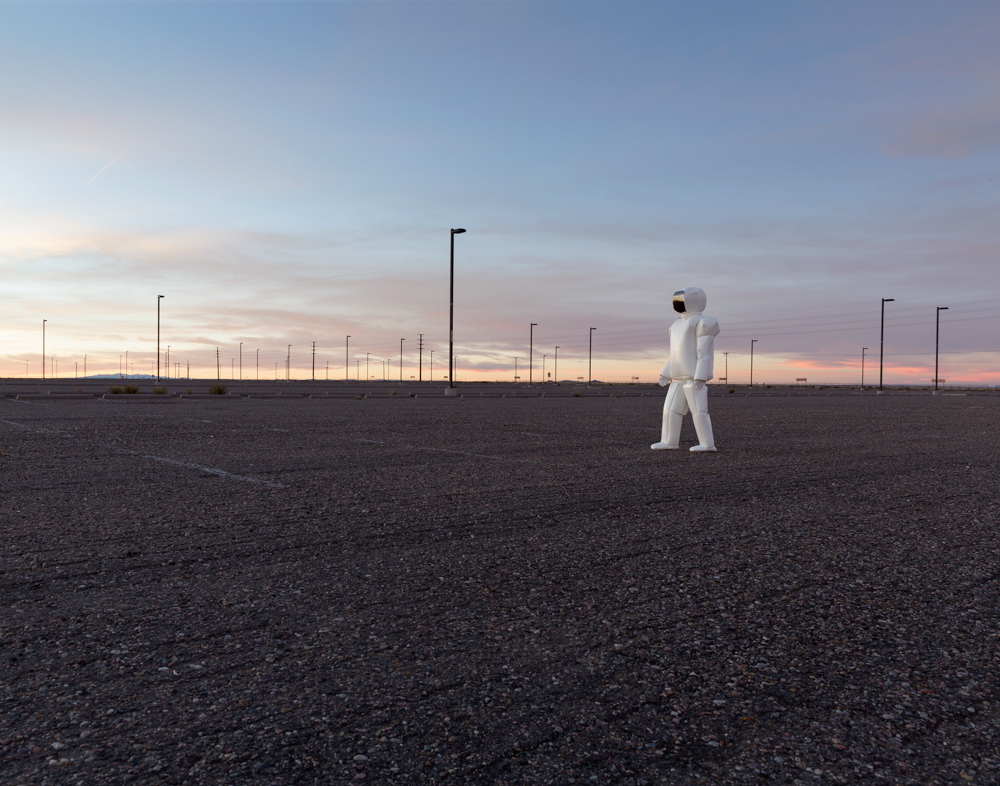Abbey Hepner: The States Project: Colorado
Uranium, robots, and nuclear mascots form unlikely companions in the mind and work of artist Abbey Hepner. She has used uranium as the light-sensitive emulsion to investigate nuclear waste sites; she documented mascots that adorned nuclear power plants in Japan; in her series Caretaker Robots, Abbey casts a robot in the part of companion, caretaker, and lover. The series indulges science-fiction fantasies with a darker, lonelier, familiar reality. In the interview below, we talk about her work, her community engagement, her inspirations, and how she finds time to do it all.
Abbey Hepner is an artist and educator investigating the human relationship with landscape and technology. She frequently works at the intersection of art and science, navigating through collaborative and research-oriented practices. Her work explores ethical gray areas where humanity and industry collide, illuminating the increasingly common use of health as a currency. She received degrees in Art and Psychology from the University of Utah, and an MFA in Photography and Minor in Arts Management from the University of New Mexico. She is involved in community education and serves on a committee for the College Art Association, and as the Chair of the Society for Photographic Education Southwest Chapter. She teaches at the University of Colorado, Colorado Springs and is the founder of Creative Advocacy, an organization dedicated to supporting artists through funding, promotion, and professional development workshops.
Hepner’s work has been exhibited widely in such venues as the Mt. Rokko International Photography Festival (Kobe, Japan), Central Features (Albuquerque, NM), the San Diego Art Institute (San Diego, CA), Noorderlicht Photofestival (Groningen, Netherlands), Gallery of Contemporary Art (Colorado Springs, CO), Institut für Alles Mögliche (Berlin, Germany), and the Newspace Center For Photography (Portland, OR). She has presented at numerous conferences including the 2015 International Symposium on Electronic Art (ISEA) in Vancouver, Canada, and the 2016 and 2017 Society for Photographic Education (SPE) conferences.
Caretaker Robots
“An air of tension, or at least an ambiguity, pervades these untitled photographs by Abbey Hepner. Each image features a human in the company of a white robot, juxtaposing humanity and science. The resulting tension in this juxtaposition reflect the artist’s own tensions—a belief in science where she roots for technology, balanced with an awareness of human need…
It is with that human need in mind, particularly influenced by the use of robots in Japanese healthcare facilities, that Hepner works through the ethical dilemma of robotic care versus the human touch. Modifying a robot costume with a screen for its face was an important detail: the screen is the connection as mediator, a metaphor for the screens that now pervade our lives—smartphones and computers—and mediate our real-world relationships. The robot looking after Hepner in a rare self-portrait where she floats in a pool reminds us of the psychological need to care and be cared for, but not without considering whether technology will hurt or help us, or perhaps both.” -Maxine Marks, Art Historian
Your work navigates the between art and science. How much research is involved before you start a project?
I spend a lot of time researching and obsessing over a topic, usually one where I am grappling with the benefits and risks and trying to understand the complexity better. Some of the topics that I explore are energy, the nuclear industry, and robotics. Hyperobjects that we won’t understand the full consequences of until far in the future. I read a lot of psychology and sociology research and try to understand how history, media, and culture influence global changes and our ability to accept things that have potentially dire health consequences. I’m interested in the fear and anxiety that emerging and complex technologies can provoke and how agnotology and cognitive dissonance play a role in permitting it to dominate anyway. As much as I embrace and rely on scientific data and research (I have a background in Psychology and previously worked in the field of cognitive neuropsychology) I am also asking if that is enough.
I view art making as a type of research, one that is process-oriented. I spend a lot of time collecting data, forming and re-forming a hypothesis. I’m not looking for answers though, I am looking to engage in a conversation and asking: “What happens when technology fails us?”
The Caretaker Robot series seems to exist in between pessimism and optimism. Do you have an end in mind for the series?
I grew up in the micro-generation before so much of the technology that we rely on today existed. I grew up without social media or cell phones. I was seven when the World Wide Web was invented and a neighbor, who was moving and getting rid of stuff, gave me a clunky old computer not long after. I think they figured that I would teach my dad how to use a computer since he was spending his days tediously composing legal drafts on a typewriter. Sometimes technology demands that we adapt to it, making production more efficient and streamlined. Other times technology adapts to us, filling in the empty spaces of our lives and providing distraction, comfort, or the feeling of connection. I had a chaotic childhood and was constantly moving. I naturally gravitated toward online gaming where I could form relationships that were not dependent on me being rooted in a particular place. Computer advancements also permitted the kind of self-structured learning that I felt was needed growing up without the stability of a consistent K-12 education.
I witnessed technology slowly easing into our lives. As much as the black screen gradually appeared in my life and offered me the ability to form a more complex and absolute identity, I have always been conscious of the way it has changed how we connect and communicate with each other. I’ve had to shift out of linear thinking and into a more web-based thinking. I’ve accepted and even embraced many of the changes but I still experience and reflect on the social and cognitive changes from an awareness of a baseline established in my childhood; a baseline that existed before so much of the technological noise emerged. Media Scholar Sherry Turkle writes about the difference between connection and conversation and the allure of technology as an evocative object. They are important topics to reflect on if we want to understand and even begin to combat the anxiety that comes along with being constantly connected.
In 2013, I was living in Japan and became interested in caretaker and comfort robots that were being developed there. The aging population in Japan continues to be a serious concern across the country. Their care relies on the development of caretaker robots that can help fill the void. This technology is being developed elsewhere, of course, emerging at different rates and in different forms. I had a lot of questions about our responsibility to care for each other, both as we age and in the face of a disaster like the one Japan faced after the 2011 tsunami and nuclear meltdown. Humans develop relationships with non-biological persons. It is one of the many complex ways that we fulfill psychological voids in order to cope with life. This displacement of psychological needs is increasingly common in the digital era, which allows for our real-world psychological needs to be met in the virtual world. One such example is the continuing popularity of the handheld virtual pet Tamagotchi, most popular among adult Japanese women. Tamagotchis fulfill the drive to nurture and care for another being. I’m not sure how the Caretaker Robot series ends; it’s meant to be ambiguous just as the technology itself is right now. Like any technology, its fate for us will depend on the way we use it and what or, perhaps more importantly, who we are attempting to replace with it.
What is Creative Advocacy?
Creative Advocacy is a multifaceted organization providing mentorship and professional development skills for artists, hosting workshops, and interviewing artists who are making work that engages with social and political issues. It’s naturally evolved from my own interests, serving on a number of committees in arts organizations, owning a business, and focusing on Arts Management in graduate school. I run it with a number of working professionals and we’re hoping to eventually offer summer workshops and grants to artists.
In addition to teaching, you co-founded Creative Advocacy, and chair the Southwest chapter of the Society for Photographic Education. How do you balance work, life and creative time?
Balancing teaching with community service and an artistic practice isn’t easy. I think that I am terrible at it most of the time but a lot of artists feel that way. I’d be lying if I said that I somehow managed these things simultaneously and gave them equal attention. One role usually dominates my time while big projects emerge and then when it calms down, I shift my attention to another. All of these roles fulfill something different for me though. Providing support and encouragement to other artists and surrounding myself with an artistic community helps keep me from getting discouraged with the political and social changes that are currently happening in our country. I also feel a sense of responsibility to organizations like SPE that have help shape who I am. SPE provided a safe haven in a community of like-minded people, encouraging my ideas during times of my life when I felt really lost, disconnected, or like I would never make art again. I worry about those things less now. I make art because I have to make it and I teach because I love teaching. They all seem like necessities to me.
Posts on Lenscratch may not be reproduced without the permission of the Lenscratch staff and the photographer.
Recommended
-
Laura Shill: The States Project: ColoradoDecember 24th, 2017
-
Abbey Hepner: The States Project: ColoradoDecember 23rd, 2017
-
Teri Fullerton: The States Project: ColoradoDecember 22nd, 2017
-
Heather Oelklaus: The States Project: ColoradoDecember 21st, 2017
-
Ashlae Shepler: The States Project: ColoradoDecember 20th, 2017



